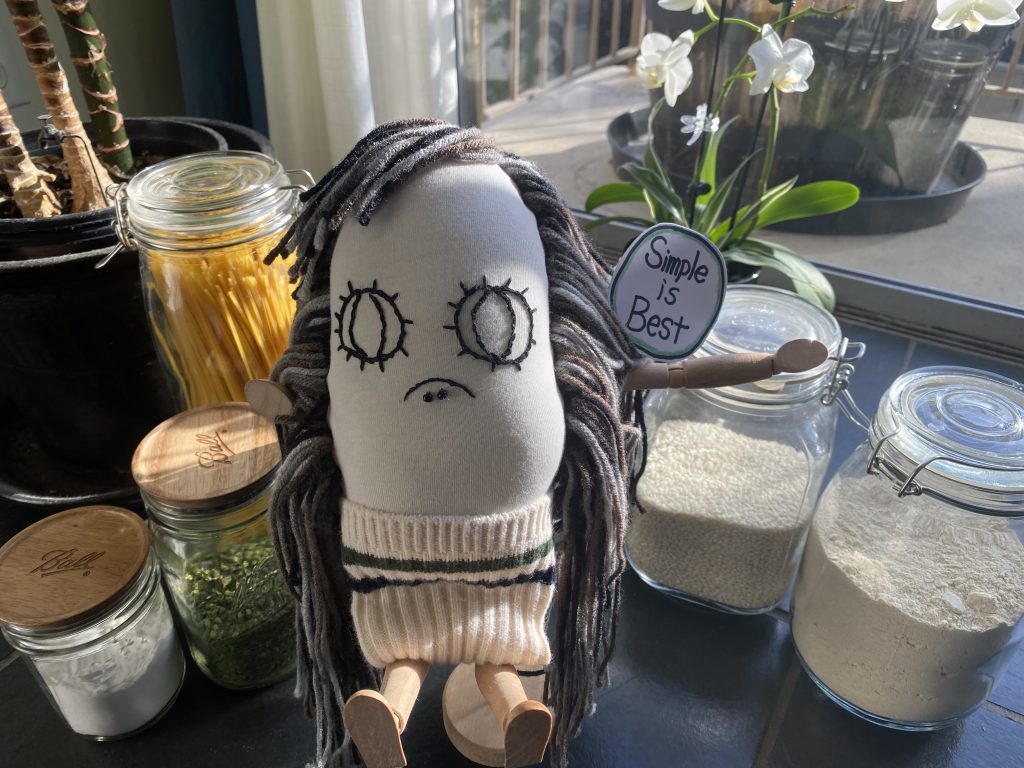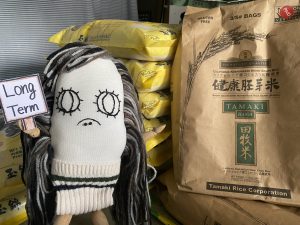
Which Japanese foods are good for a long-term emergency stockpile?
どの食品が長期備蓄に向いてる?
I know dry foods are good, but I have never thought about calories.
I want to know which Japanese foods are good for my emergency stockpile!
I thought Japanese people only buy cup-o-noodles and rice.
Is there anything else?
Canned foods are the best, right?
There are many different kinds of food that are appropriate for long-term storage. Today, I would like to introduce you to some Japanese non-perishables for your long-term stockpile. But remember, if the time comes to use food from your long-term stockpile, you might be cooking like you’re camping out in the wild.
忘れないで。
長期備蓄を必要とする時は、キャンプをしているかのような
状態にいるかもしれないということを。

In a short-term emergency, when using food from your short-term stockpile, you might be able to quickly cook things up using a portable electric stove, generator, or camping stove. But the situations that call for tapping into your long-term stockpile are ones where you’re more likely to be foraging for firewood to build a fire. There is a difference between short-term and long-term stockpiles and how to prepare them.
短期と長期の違いは、火の起こし方で変わってくる

⚠️
Put some serious thought into your stockpile, and be sure to factor in any picky eaters in your family.
最悪な事態を想定し、そして家族の誰もが食べれる物を。
As you know, I am living in the U.S. It’s difficult to find Japanese food here. Actually though, if we look hard, we can find substitutes here in the U.S. (and maybe in other countries too, depending on where you are) that are close enough to the Japanese items in question. When you have a chance to visit to Japan, I want everybody to get some of the Japanese emergency food, listed below, to bring back home as a souvenir. Many Japanese people have experience overcoming difficulties (WW2, Tokyo / Hiroshima / Nagasaki bombings, big earthquakes, tsunami, etc). Please take advantage our experience and skills when preparing your emergency stockpile.
These are the food items in my long-term stockpile
2. Kiri mochi
3. Flour (unmilled grain)
4. Noodles
5. Dry foods (soy beans /azuki beans / seaweed / shiitake / vegetables / soup)
6. Canned food (fish / beans / meat)
7. Salt
8. Sugar
9. Honey
10. Soy sauce
11. Vinegar
12. Sake
13. MIso
14. Umeboshi (pickled plum)
15. Spices (curry / bonito powder)
16. Supplements (multivitamins & minerals )
You probably noticed the foods in my list are very simple. But there are many ways to use them. Please do not forget that any preparation efforts will be meaningless if you can’t eat your emergency food when you need it. Put some serious thought into your stockpile, and be sure to factor in any picky eaters in your family.
長期備蓄の準備は、普段の食生活を見直すチャンスでもあります!

My father was 1 year old when WW2 started.
I might be going off-topic here, but my father was 4 years old, in Tokyo, during World War 2. His home town was completely wiped off the map by the Tokyo firebombing, and for a long time he could only eat sweet potatoes and corn. He had no choice. There was no other food available. Sweet potatoes and corn, every day. After that, he absolutely hated sweet potatoes and corn. He refused to eat them when he was older, because of his bad memories. Sweet potato and corn are raw foods. I know that my grandparents did not have any emergency food prepared, they just got raw vegetables from nearby farm families. Years later, my grandmother would buy a lot of food and stash it under the floor for emergencies.
One final word of caution, if you use the wrong storage method, there is no point to setting up the long-term stockpile. I will explain each food and how to manage storage in your home, in a future post.
See you next time.
Remember, “Protect your life by yourself” (自分の命は自分で守る). You need to survive first, and then you need your emergency supply. No matter how well you prepared your emergency supplies, if you die, then all of your preparations will have been for nothing. First and foremost, keep your health up all the time. Build your stamina so that if you need to, you can evacuate as quickly as possible. Stay healthy